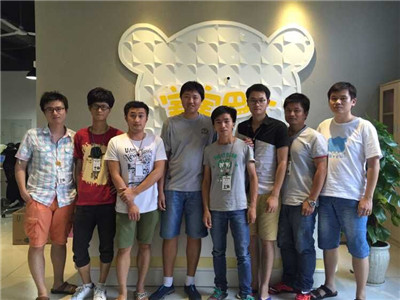引言:获取网页内容是我们实现网页操作的基本之基本,今天这一讲,我们和大家讲一下基本请求网页内容的几种方法。
我们似乎每天都要做这样一件事情,打开一个浏览器,输入网址,回车,一个空白的页面顿时有了东西,它可能是百度之类的搜索页面,或是一个挤满了文字和图片的门户网站。
我们可以从三个方面理解这个过程,一个是浏览器,二个是服务器,第三个是浏览器和服务器之间通信的协议。
当然,我们今天不讲<网页请求过程 >
这一次,我们说一下如何用PHP代码请求网页内容。

获取网页内容方法
1.file_get_contents+[请求方式:GET]
<?php $url = 'http://do.org.cn'; $html = file_get_contents($url); echo $html; ?>
2.file_get_contents+[请求方式:POST]
无需Cookie操作,则使用以下方式:
<?php $url = 'http://do.org.cn/upload.php'; $data = http_build_query(array('foo' => 'bar')); $params = array( 'http' => array( 'method' => 'POST', 'content' => $data, 'header' => "Content-type: application/x-www-form-urlencoded " . "Content-Length: " . strlen($data) . " " ) ); $context = stream_context_create($params); $html = @file_get_contents($url, '', $context);
有需Cookie操作,则在$params里的'header'添加下一行(类似如下文):
"cookie:cookie1=c1;cookie2=c2 " ;
3.fopen+[请求方式:GET]
<?php // 尝试打开网页 $fp = fopen($url, 'r'); // 获取报头信息 $header = stream_get_meta_data($fp); while (!feof($fp)) { $result .= fgets($fp, 1024); } fclose($fp); // 输出结果 echo "url header: {$header} <br/>"; echo "url body: $result"; ?>
4.fopen+[请求方式:POST]
<?php $data = http_build_query(array('foo1' => 'bar1', 'foo2' => 'bar2')); $params = array( 'http' => array( 'method' => 'POST', 'content' => $data, 'header' => "Content-type: application/x-www-form-urlencoded Cookie:cook1=c3;cook2=c4 " . "Content-Length: " . strlen($data) . " " ) ); $context = stream_context_create($params); $fp = fopen('http://do.org.cn/upload.php', 'rb', false, $context); $content = fread($fp, 1024); fclose($fp); echo $content; ?>
5.fsockopen+[请求方式:GET]
用fsockopen函数打开网址URL,以GET方式请求完整的数据,包括header和body.
<?php function get_url($url, $cookie=false) { $url = parse_url($url); $query = $url[path]. "?" .$url[query]; echo "Query:" . $query; $fp = fsockopen($url[host], $url[port] ? $url[port] : 80, $errno, $errstr, 30); if (!$fp) { return false; } else { $request = "GET $query HTTP/1.1 "; $request .= "Host: $url[host] "; $request .= "Connection: Close "; if ($cookie) { $request.="Cookie: $cookie "; } $request .= " "; fwrite($fp, $request); while (!@feof($fp)) { $result .= @fgets($fp, 1024); } fclose($fp); return $result; } } // 获取url的html部分,去掉header function get_html($url, $cookie=false) { $data = get_url($url, $cookie); if ($data) { $body = stristr($data, " "); $body = substr($body, 4, strlen($body)); return $body; } return false; } ?>
6.fsockopen+[请求方式:POST]
用fsockopen函数打开网址URL,以POST方式请求完整的数据,包括header和body.
<?php function post_url($url, $data, $cookie, $referrer="") { // parsing the given URL $url_info = parse_url($url); // Building referrer if ($referrer == "") { // if not given use this script as referrer $referrer = "111"; } // making string from $data foreach ($data as $key => $value) { $values[] = "$key=" . urlencode($value); } $data_string = implode("&", $values); // Find out which port is needed - if not given use standard (=80) if (!isset($url_info["port"])) { $url_info["port"] = 80; } // building POST-request: $request .= "POST ".$url_info["path"]." HTTP/1.1 "; $request .= "Host: ".$url_info["host"]." "; $request .= "Referer: $referer "; $request .= "Content-type: application/x-www-form-urlencoded "; $request .= "Content-length: ".strlen($data_string)." "; $request .= "Connection: close "; $request .= "Cookie: $cookie "; $request .= " "; $request .= $data_string." "; $fp = fsockopen($url_info["host"], $url_info["port"]); fputs($fp, $request); while (!feof($fp)) { $result .= fgets($fp, 1024); } fclose($fp); return $result; } ?>
7.curl库
注意:使用curl库之前,需要查看一下php.ini是否已经打开了curl扩展.
<?php $ch = curl_init(); $timeout = 5; curl_setopt($ch, CURLOPT_URL, 'http://do.org.cn/'); curl_setopt($ch, CURLOPT_RETURNTRANSFER, 1); curl_setopt($ch, CURLOPT_CONNECTTIMEOUT, $timeout); $content = curl_exec($ch); curl_close($ch); echo $content; ?>

本站文章为 宝宝巴士 SD.Team 原创,转载务必在明显处注明:(作者官方网站: 宝宝巴士 )
转载自【宝宝巴士SuperDo团队】 原文链接: http://www.cnblogs.com/superdo/p/4805187.html